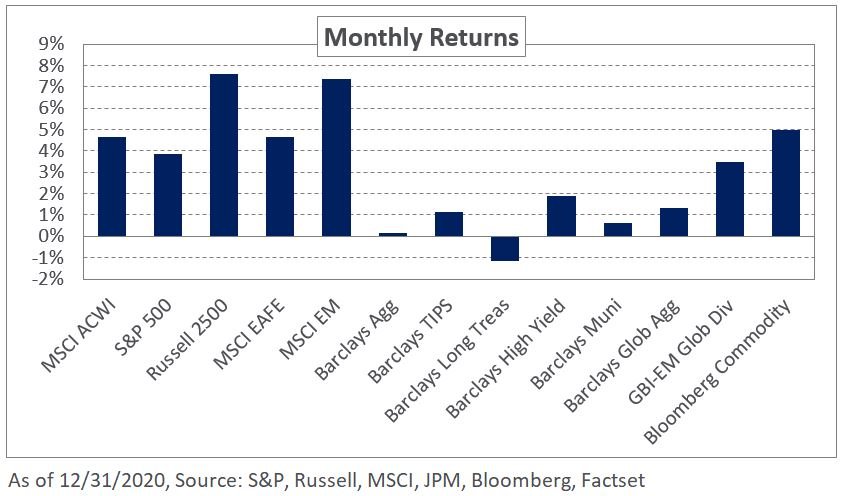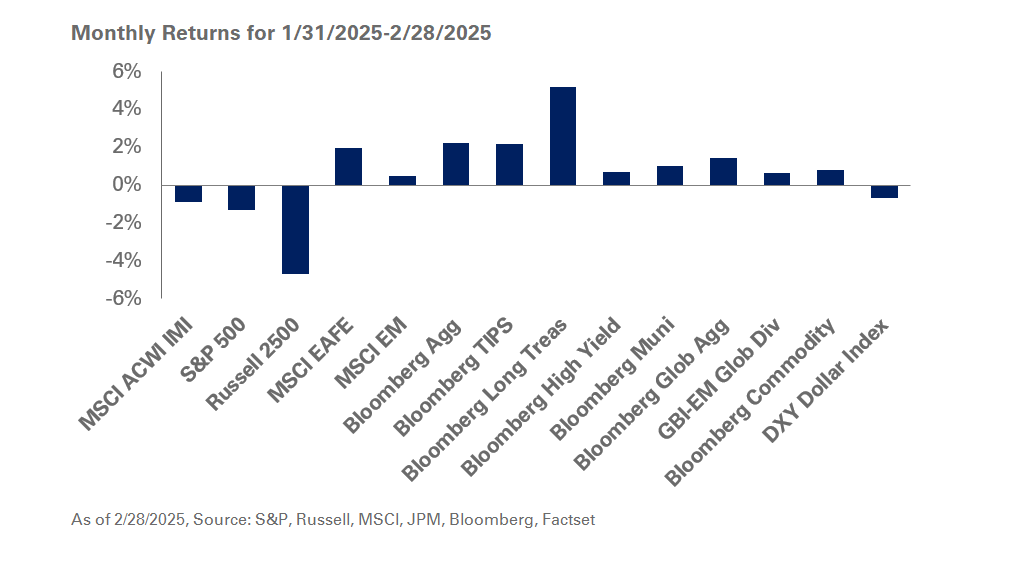Global equities ended 2020 with a bang, adding to already sizable gains from earlier months, as positive news around COVID-19 vaccines and a fiscal stimulus plan bolstered sentiment. In the U.S., the S&P 500 Index increased 3.8% in December; small-cap equities outperformed with the Russell 2000 Index gaining 8.7% last month. Non-U.S. equities outperformed their domestic counterparts as U.S. dollar weakness strengthened local-currency returns. The DXY Index fell 2.1% during the month and is down 6.7% year-to-date, as record-low interest rates in the United States and unprecedented stimulus have negatively impacted demand for the dollar. As a result, the MSCI EAFE and MSCI Emerging Markets indexes rose 4.6% and 7.4%, respectively, in December.
Within fixed income, Treasury rates moved modestly higher with 10- and 30-year yields increasing eight and seven basis points, respectively. The movement in nominal yields reflected rising inflation expectations with additional fiscal stimulus. As such, the 10-year Treasury breakeven rate increased 21 basis points to 1.98% in December – supporting a 1.1% monthly return for the Barclays Treasury Inflation Protected Securities Index. In credit, spreads continued to tighten, reflecting broad risk-on market sentiment. Lower-quality credit saw the greatest movement, as the option-adjusted spread on the Barclays U.S. Corporate High Yield Index fell 52 basis points last month, fueling returns of 1.9% for the index.
In real assets, commodity indexes rallied given spot-price appreciation in energy and metals; spot WTI crude oil was up 7.3% during the month.
As we look to 2021, significant uncertainties surrounding the global economy remain. We expect continued volatility across capital markets and encourage investors to be disciplined and mindful of market liquidity. We would like to remind our clients that disciplined rebalancing is not only about buying undervalued or overlooked assets, but also selling them when they have delivered robust returns and outperformed the rest of a diversified portfolio. We also encourage investors to maintain a dedicated allocation to Treasuries to support liquidity levels and cash flow needs as potential market dislocations can introduce bouts of illiquidity across publicly-traded markets.




